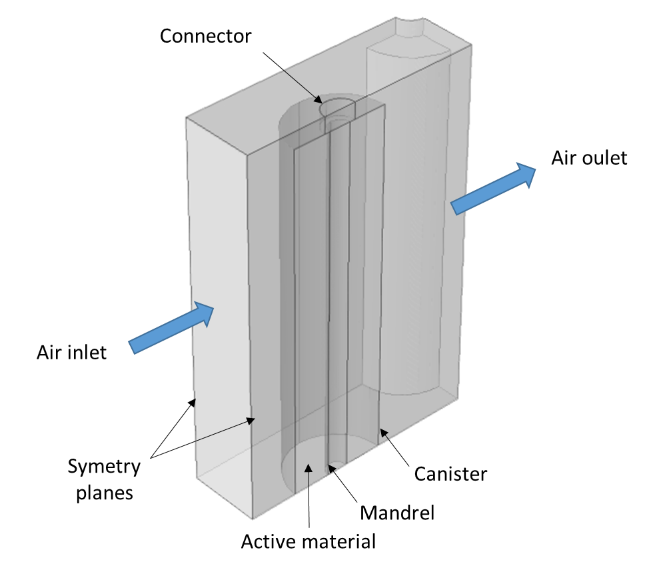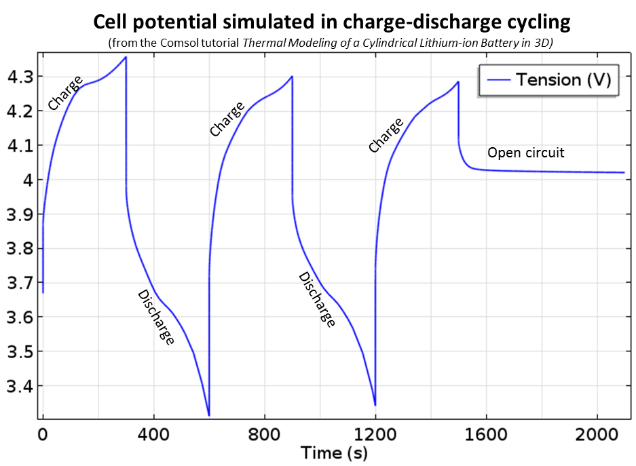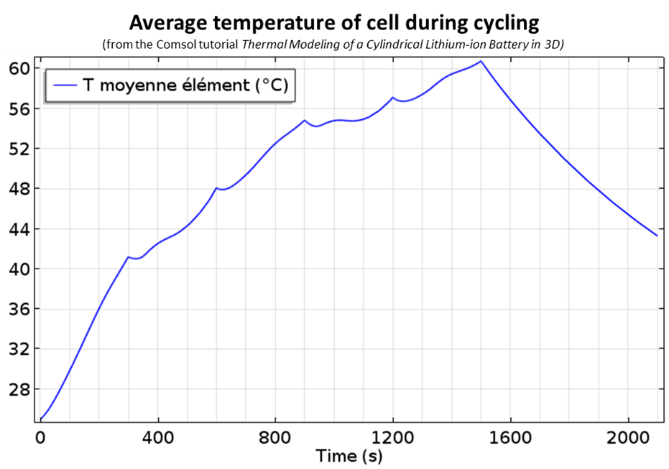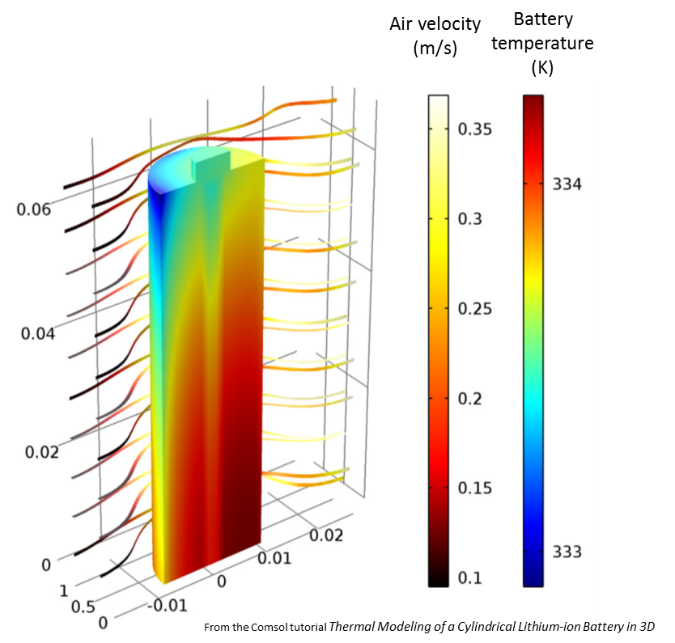Keywords
battery, cells, pack, lithium-ion, thermal management, Joule effect, charge-discharge cycling, voltage, heating, cooling
Context / Goal
Lithium-ion batteries are the most common current storage solution for embedded systems. Charge-discharge cycles lead to inevitable heating of the system due to the Joule effect in the materials constituting the cell. Thermal aspect is an important feature for the management of a battery pack which is made of an assembly of many cells.
This example, taken from a Comsol tutorial in the Batteries and Fuel Cells module, is dedicated to the simulation of the heating of a cylindrical Li-ion comprised in a battery pack. This battery pack is subjected to laminar air flow during the charge-discharge cycling. It is a 3D model describing an elementary pattern of the pack with the following elements :
-
The cell, made up of an external canister, a central mandrel and the active battery materials
-
A cylindrical connector on top of the battery
-
Air flow compartment
-
Two symmetry planes

SIMTEC's Achievements / Results
The model addresses the electrical, thermal and flow aspects of the system. It is constructed as follows :
-
The cell voltage during charge-discharge cycles are first calculated by means of an electrical model involving porous electrodes, developed in 1D with the specific application Lithium-ion battery.
-
The air flow around the cell is described by the Navier-Stokes equation under laminar flow condition. Air penetrates into the domain with a velocity of 0.1 m/s and a temperature of 25°C.
-
The temperature is calculated, in the 3D model, with a volumic heat source defined in the active materials and associated with Joule losses and overpotentials calculated by the 1D-electrical model. Temperature evolves by conduction in the solid domains and by convection in the air.
-
The entire model is transiently solved, with an initial temperature of 25°C.




